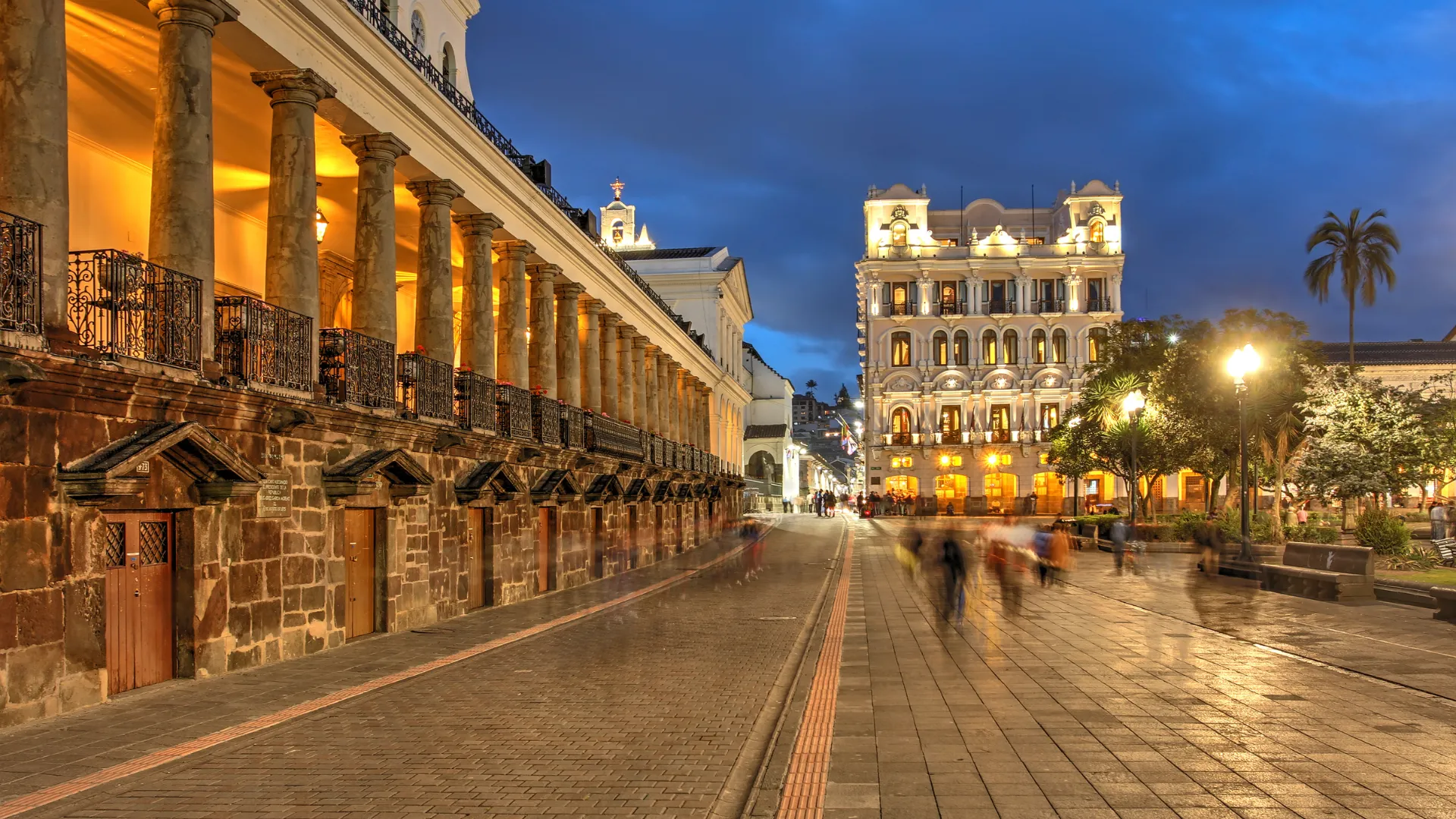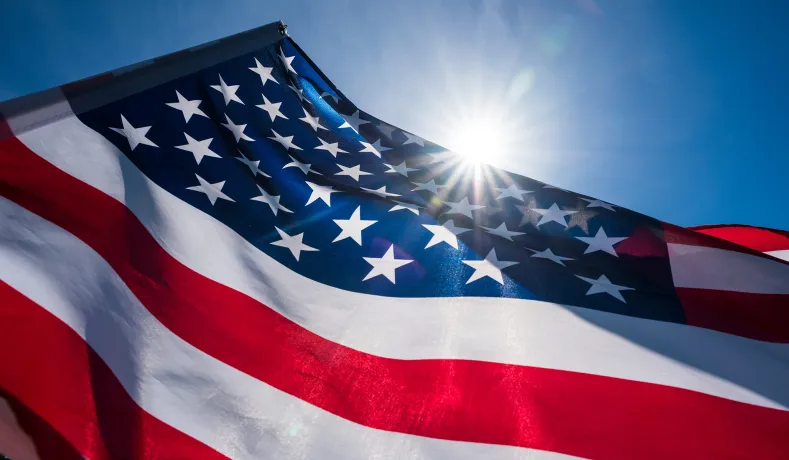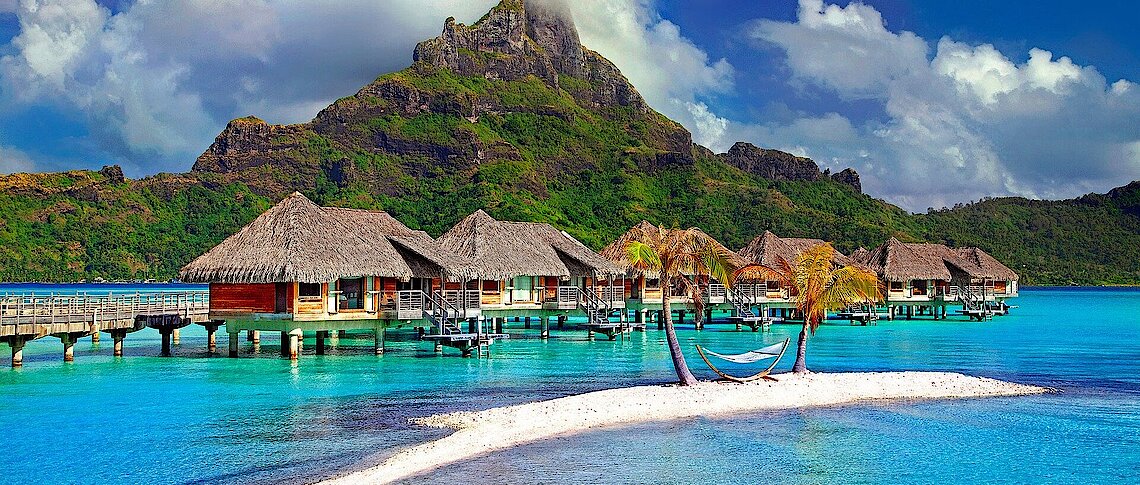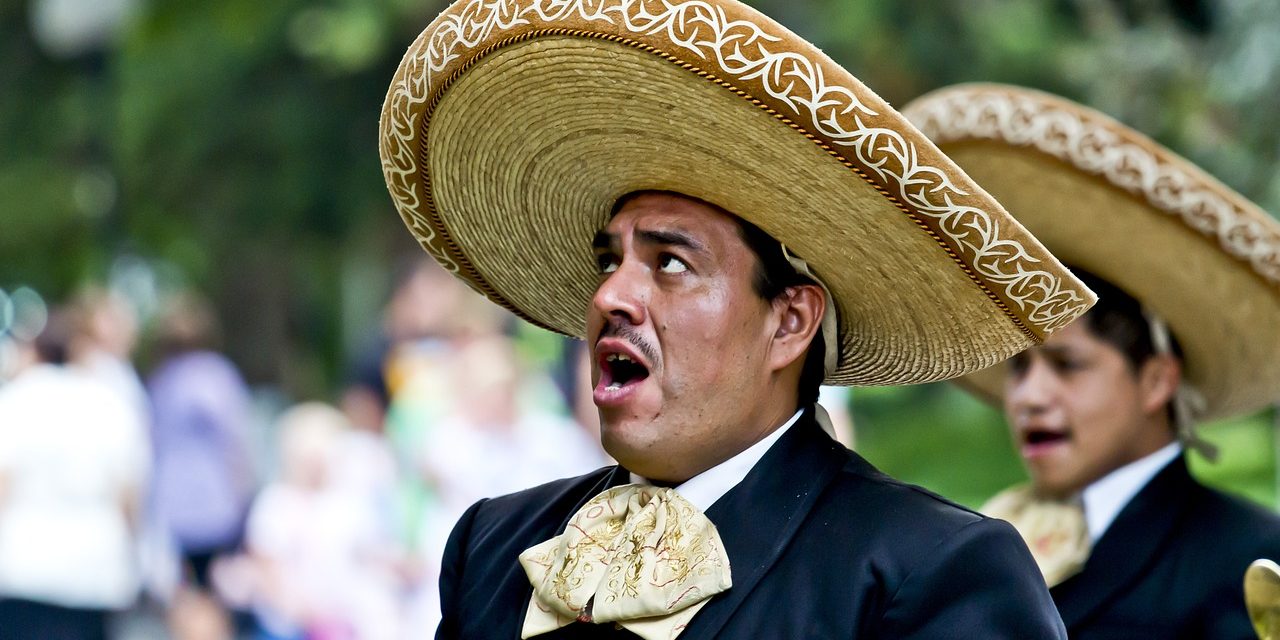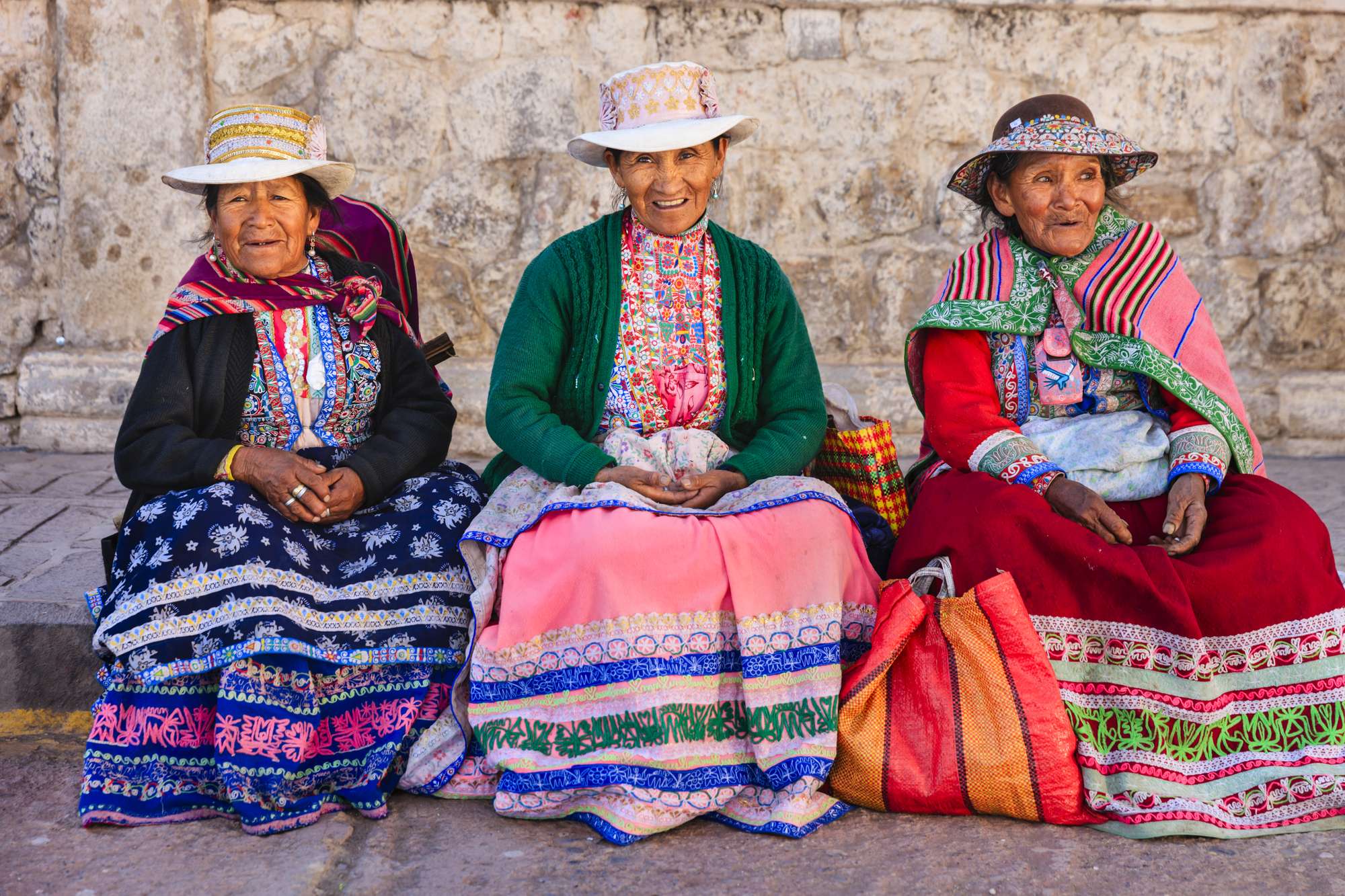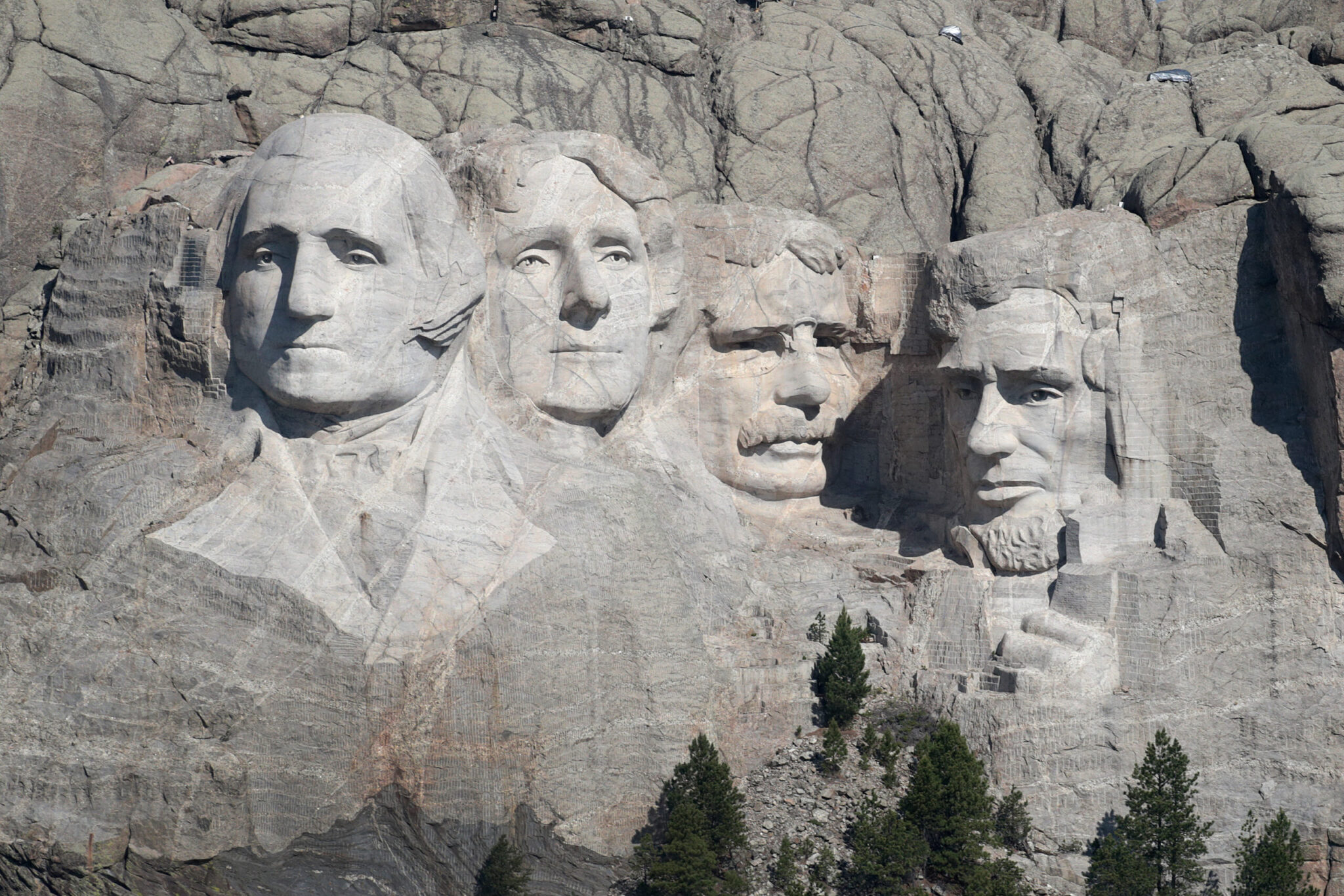What stereotypical vision do you have about Brazil? An open-minded people or a primitive people? A lazy, slothful, sluggished, slacked people or hard working, workoholic and dedicated people? When we talk about international vision about Brazil we easily associate with Amazon Rainforest, Beaches, Samba and Favelas. When we talk about brazilians the first thing that come is Ronaldinho & Pelé.
Let’s check what are those stereotypes for the land of Carnival!
According to us (brazilians) people just think about CARNIVAL, SAMBA & FOOTBALL. They think our WOMEN are all DARK-SKINNED, BEAUTIFUL, SEXY, EASY to get in bed, with BIG BUTTS and walk around NAKED in public. Brazilians eat FRUIT DIRECTLY FROM THE TREES, play SOCCER all day long on dirt fields while listening to SAMBA, drinking CAIPIRINHAS and playing with their PET MONKEYS. All Their politicians are CORRUPT, their streets are all DANGEROUS, their idols are PELÉ & RONALDINHO, and they speak SPANISH as their native tongue. And of course, BUENOS AIRES is the capital of Brazil.
 “Blame It on Lisa” is the fifteenth episode of the thirteenth season of the American animated sitcom The Simpsons. In the episode, the Simpson family goes to Rio de Janeiro, Brazil. Several references to popular culture are included in the episode. The title “Blame It on Lisa” refers to the 1984 film Blame It on Rio, which also takes place in Brazil.
“Blame It on Lisa” is the fifteenth episode of the thirteenth season of the American animated sitcom The Simpsons. In the episode, the Simpson family goes to Rio de Janeiro, Brazil. Several references to popular culture are included in the episode. The title “Blame It on Lisa” refers to the 1984 film Blame It on Rio, which also takes place in Brazil.
In 2002, when the Simpsons, America’s favourite dysfunctional family, visited Brazil the cartoon characters found that Rio de Janeiro is a city where all men are bisexual, where fearsome monkeys roam the streets, and tourists are kidnapped by taxi drivers and mugged by children.
The ironic humour was par for the course for a show that has poked fun at middle American stereotypes for more than a decade.
Unfortunately, the Rio tourist board did not see the funny side and sued the producers, Fox, for damage to its international image and loss of revenue. The issue threatens to become a diplomatic incident. Now this episody was banned in Brazil, but of course we laugh a lot and still laughting because we can see it on Youtube. Well, if you want to read more about this episody between Brazil x Fox you can check this article HERE.
The most common brazilian stereotypes are
- Brazil MUST be a VERY POOR COUNTRY;
- Men are violent “machos” who unrespect women and consider her submissive and trash;
- Brazilians MUST be dark skinners;
- Brazilian women MUST be easy for sex;
- Brazilian women’s beauty MUST BE FAKE, because Brazil is the paradise of plastic surgery;
- Brazilians dream about ‘green card’;
- Brazilians ask money for tourists to sustain their miserable families;
- Brazilian MUST BE latinos;
- if brazilians MUST BE latinos, then, brazilians are hispanic;
- If brazilians are hispanic, brazilians speak spanish;
- Brazil is the country of samba, soccer, beaches and Amazonia;
- Brazil is the most violent nation of the whole World; etc.
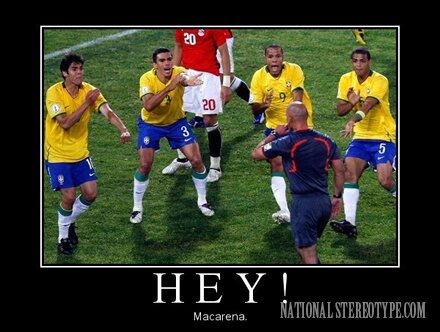 HEEEEEEEY MACARENAAAAAAA
HEEEEEEEY MACARENAAAAAAA
ONE GRINGO`S HUMBLE, BALANCED TRUTH
Brazil is another country with its own mix of positive and negative perspectives. In many ways, and for many people, Brazil is one of the brightest lights in the world, but for others, it’s just another third-world Latin American country with big problems. A lot of people love Brazil, with good reasons, because Brazilians are nice, charismatic and interesting, but others only see the problems: corruption, crime and inequality, among others.
There are a lot of misconceptions, but most of these don’t come from malice, but rather from ignorance, and the fact that people tend to generalize what they see in the mass media. Even if it´s difficult to accept, most Brazilians do the same thing with other countries. I’m American and most people, whether they see it or not, come at me with preconceptions that range from “America the glorious land of Hollywood, public order and happy people” to “America, the Great Satan that rapes and pillages the rest of the world to drill for oil.” The truth is somewhere in the middle. The U.S. has a lot of serious problems with international relations, but there’s a lot of really awesome stuff about my country and people too. Not to recognize this is a mistake.
With Brazil, some of the most interesting aspects in the eyes of the rest of the world really are the Amazon Rain Forest, Rio de Janeiro, and Soccer. You guys are only one of the best soccer countries in the world. Even if you don´t play soccer, or dance samba, you don´t have to be offended if people think you do. It is not a bad thing. Brazilians should embrace this ignorance (or learning process) with patience for the rest of the world, and recognize that sometimes people haven’t been privileged to have the opportunity to learn about other aspects of Brazil, and that maybe these stereotypes represent interest in you and your culture rather than apathy. This represents your opportunity to be an ambassador for your country and culture and unveil the countless other amazing and interesting aspects of Brazil and Brazilians.
 Meanwhile in Brazil not a single fuck is given on any day
Meanwhile in Brazil not a single fuck is given on any day
POSITIVE STEREOTYPES OF BRAZIL
This is a collection of the positive stereotypes about Brazil that many gringos, including myself, believe about Brazil and Brazilians. I grew up near Seattle, U.S.A. acquiring a lot these ideas long before I even stepped on Brazilian soil. Even though I had only met three or four Brazilians before my twentieth birthday, the vast majority of the things I had heard about Brazil were positive, and the Brazilians I met along the way only reinforced this positive viewpoint as pleasant people. And no, I was never taught that the Amazon Rain Forest belonged to the U.S. (nor had I ever heard of this happening until a few Brazilians vehemently told me that this happens in the U.S. Until now, this still seems absurd to me). Of course, even the positive side doesn’t represent an impartial perspective, as I was a dreamer with my eyes set on Brazil, but the positive stereotypes written here, in my opinion, reflect a much more accurate international perception of Brazil than the negative ones that a lot of Brazilians carry.
Honestly, I was always fascinated by Brazil. The two exchange students at my high school were really nice people and through the documentaries, movies, and other aspects communicated about Brazil through the American media, I became amazed by Rio, the Amazon Rain Forest, Samba and stories of Capoeira. I bought a poster of Cristo Redentor when I was in college and hung it on my wall as I dreamed of future adventures. Was my perception of Brazil totally accurate? NO! But it made sense to me and my upbringing, and it wasn´t negative.
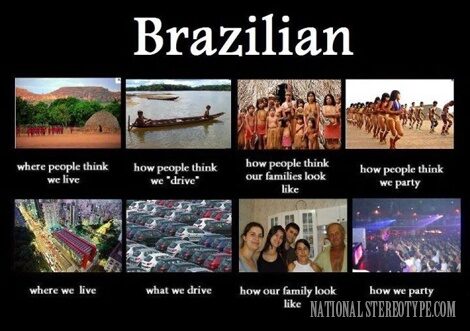 BRAZILIANS are INDIANS that live either in the Amazon Rainforest
BRAZILIANS are INDIANS that live either in the Amazon Rainforest
My stereotypes were molded by Brazil’s international fame as put forth by the media that I was exposed to (largely about Carnaval, the Amazon Rain Forest, and Rio), and the handful of Brazilians I met. Not everything I believed was true. I was ignorant to a lot. For example, I remember being surprised when in college I met a blonde girl from the South of Brazil. That was embarrassing, but my mistake makes sense when you consider how Brazil was presented in the American media. I´m not excusing such glaring ignorance, but the media rarely showed blonde Brazilians, and in the United States we didn’t learn about European immigration in Southern Brazil or the ethnic makeup of Brazilians.
But, even with my ignorant points, I loved Brazilian culture, and I still do. Brazil is something I dreamed about for years and my perspective was built with the positive experiences that I searched for. I know that my perceptions are colored by my experiences and not by other peoples’, which is to say that reality is subjective. I represent the positive side of the spectrum, but in sober reflection, I know there is another side.
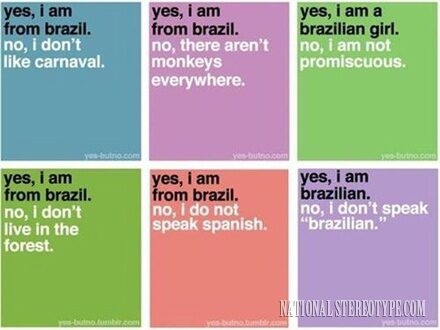 Brazilians try to defend themselves from the most common Stereotypes
Brazilians try to defend themselves from the most common Stereotypes
What do Brazilian males/females typically look like?
Well, the brazilians are a mixed people, so they don’t have a “brazilian” face. That’s why you can see a brazilian looks like Julio Cesar or Maicon (soccer players), or Gisele Bündchen (model) or Tatiane Barros (Amazon Dancer).
Take a look at a brazilian DNA.
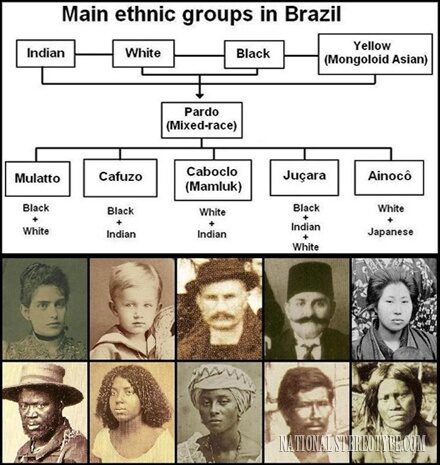 The Brazilian people have several ethnic groups. First row: White (Portuguese, German, Italian and Lebanese, respectively) and Japanese Brazilians. Second row: African, pardo (cafuzo, mulato and caboclo, respectively) and Native (Indian) Brazilians.
The Brazilian people have several ethnic groups. First row: White (Portuguese, German, Italian and Lebanese, respectively) and Japanese Brazilians. Second row: African, pardo (cafuzo, mulato and caboclo, respectively) and Native (Indian) Brazilians.
So basically anyone can look like a Brazilian!
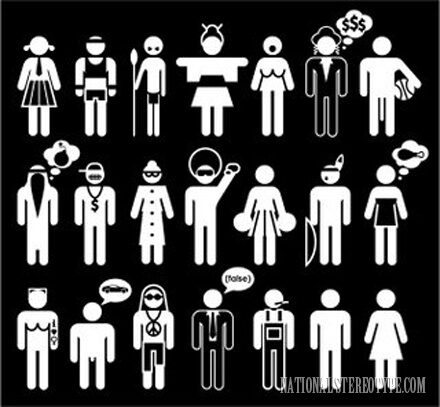 anyone can look like a Brazilian
anyone can look like a Brazilian
Who Wants to Be a Brazilionaire?
 Who Wants to Be a Brazilionaire?
Who Wants to Be a Brazilionaire?
Who Wants to Be a Brazilionaire? is a guide book about Brazil. Lisa was reading it on the AeroBrasil flight to Rio de Janeiro. Marge later read it when they were in Brazil. The book gives tips for Americans going to Brazil such as:
- Only drink bottled water.
- Don’t get into an unlicensed taxi.
- They have winter during the American summer.
- You can get anywhere you want by joining a conga line.
The name of the book is an obvious parody of the game show Who Wants to Be a Millionaire?
And if you never heard about that “the Amazon belongs to US” take a look at this video…
Private control is the best way to save the Amazon
If you liked this article, you can like it below, and/or become an official member of the Real Life English International Community. It’s a free and open social network for English speakers and learners, based in BH, where you can learn and practice English with foreigners and Brazilians, using community, culture and meaningful relationships. With your free membership, you will receive an invitation into our International Facebook Community, in addition to future Real Life English in person meetings.

